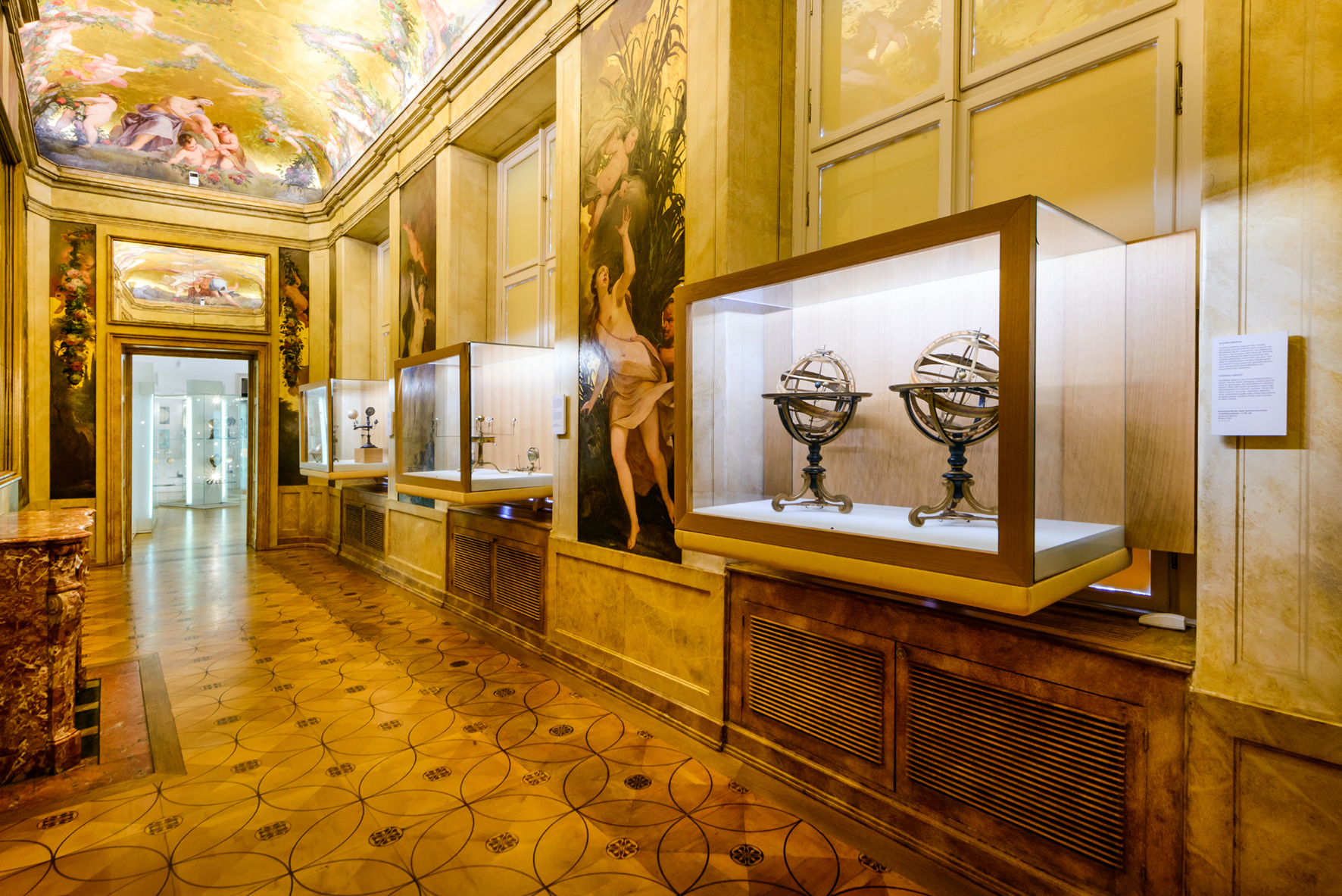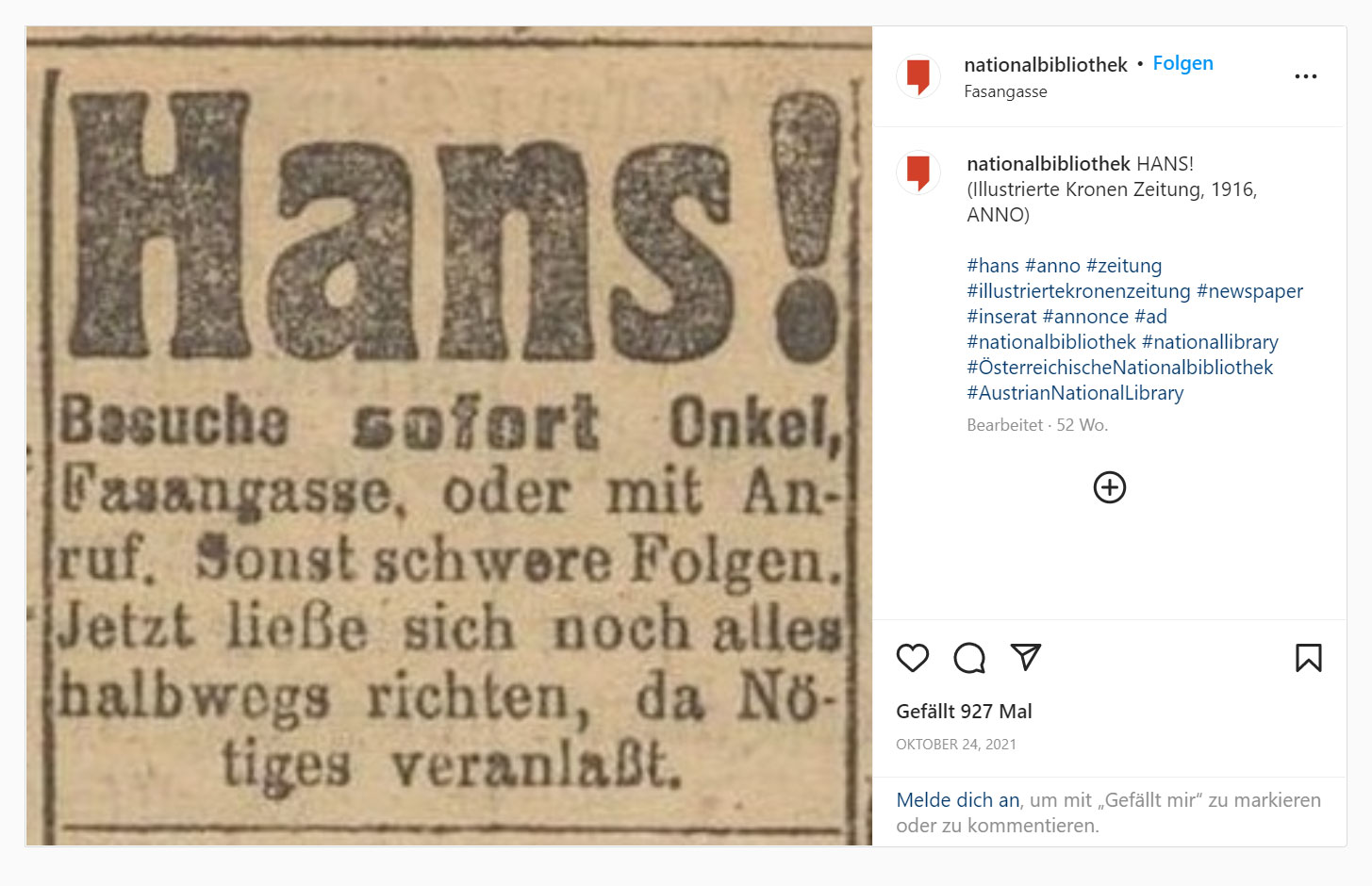Social Media in Libraries: Best Practice From the Austrian National Library
Tens of thousands of followers on Facebook, impressive community engagement on Instagram and a respectable number of views on YouTube: the Austrian National Library (Österreichische Nationalbibliothek/ÖNB) is a successful player on the social web. We interviewed the people in charge of the channels to sneak a peek behind the scenes of the editorial department.
An interview with Marlene Lettner, Claudia Stegmüller and Anika Suck, part of the social media team in the Communication and Marketing Department of the Austrian National Library.

The reach of the Austrian National Library is one of the widest on the social web among libraries in German-speaking countries. Whether it’s Facebook, Instagram, YouTube or LinkedIn – the institution keeps its public up to speed through text, photo and video, and it does it successfully! We asked Marlene Lettner, Claudia Stegmüller and Anika Suck, who are in charge of the channels, what the National Library’s social media goals are, which formats generate followers and what the workflow behind the scenes looks like.
Hello! In your opinion, why is it important for libraries and digital infrastructure institutions to be active on social media?
Firstly, to increase our visibility and secondly, because we want to reach our target groups where they like to hang out. Beyond this, as the Austrian National Library, we have a legal mandate to make our collections accessible to a wide public, and social media is perfect for this.
The Austrian National Library runs its own channels on Instagram, Facebook and YouTube. Why did you decide to use these specific networks and who are your target audiences there?
We cater to our target audiences on all of the channels they use. This means that on Facebook, we communicate with our older target groups who mainly visit our museums. Facebook still offers the best option when it comes to telling our visitors about events too. Instagram is most popular with the target group of 25- to 45-year-olds and it offers some playful features. We mostly use YouTube as a home base for our videos, which we then share on our website or via other social media channels.
What kind of topics do you feature on your social media channels?
We’re not just a library – we’re also home to six museum areas and eight collections – so we need to cover a wide range of topics.
From special exhibitions to events and current blog posts, offers for guided tours and seminars, follower reposts and bizarre discoveries in the archive – we do it all.
To create good content for an institution’s social media channels, you need people who remember the social media team and pass on information, insights and stories. How do you manage to motivate other employees to give you ideas for content?
We are a relatively large institution with almost 400 employees. Luckily, colleagues from the most varied of departments provide us with content on a regular basis. This includes special discoveries from the photo archives, from ANNO (Austrian Newspapers Online) and finds from the hashtag #AriadneFrauDesMonats (“#AriadneWomanOfTheMonth”).
What topics or posting formats work particularly well for you?
Our users like photos of our magnificent ceremonial hall the most, as well as old cityscapes of Vienna.
Antique bookshelves with ladders ladders always work well, as does anything ‘behind-the-scenes’ in addition to unusual, particularly beautiful perspectives. Unusual finds from our collections are also popular.
Has a content idea ever backfired?
Fortunately, we haven’t had a shitstorm yet. And we’ve never had a real fail either. There are, however, some sensitive topics we deal with that might cause a stir. That’s why we try to stick to the facts, stay neutral and not get political. But sometimes people react to something when you’re not expecting it: we recently advertised an event that is taking place throughout Austria that focuses on climate protection this year. Some people misunderstood and reported the post.
In your opinion, what is a good tip that libraries should bear in mind if they want to get started on social media?
As it’s difficult to influence the algorithms, it’s important to experiment and find out what your target audience actually likes. In terms of content, you should aim for quality and stay true to your principles. So don’t share daily politics, polemical content and so on.
And finally, please tell us which formats go down particularly well – both with the public and with the editors.
Stories with GIFs, reels or short videos and anything that gets users interacting with you like exclusive Instawalks, reposts and quizzes. Recurring content like #staircasefriday is also good because the editing is faster, but it still keeps things interesting for users.
Thank you for the interview!
This text has been translated from German.
The Austrian National Library
This might also interest you:
- Social Media in Libraries: Best Practice and Tips for Successful Profiles From the Bayerische Staatsbibliothek
- Libraries on Twitch: Ideas for Starting on the Streaming Platform
- Briefly Noted: ZBW MediaTalk in Test Mode on Mastodon
- Why Libraries Have to be Permanently Active on Social Media: 7 „Glorious“ Reasons – 2021 Update
- Scientific tweets: Why Less is More and When a Tweet is Perceived as Being Scientific
- Study on Twitter Usage: What Roles Do Academic Hierarchies Play?
- Benefit from Twitter as a Learning Tool: Learning in Social Networks
- User Experience for Libraries: The Best Tools and Methods for Beginners
Marlene Lettner (LinkedIn), Claudia Stegmüller (LinkedIn und Xing) and Anika Suck (LinkedIn) are part of the social media team in the Austrian National Library’s Communication and Marketing department.
Portraits:
Anika Suck: private©, Claudia Stegmüller: FOTObyHOFER©
All other pictures: Austrian National Library©
Libraries on Twitch: Ideas for Starting on the Streaming Platform
by Claudia Sittner Twitch, actually Twitch.tv, is a live streaming platform. Founded...



